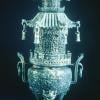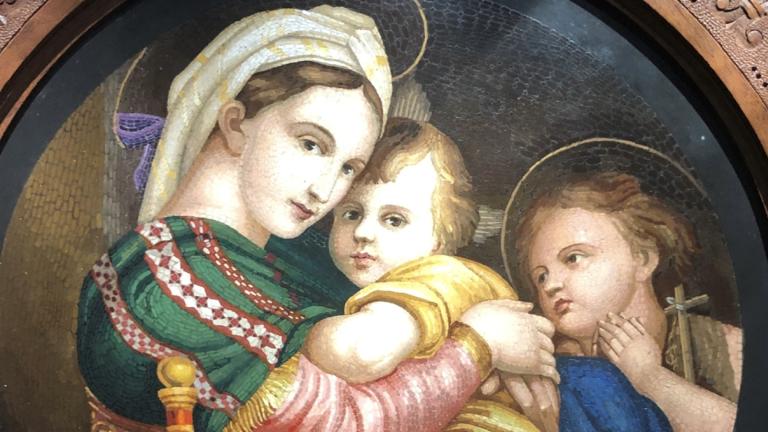We visit a treasure box of a museum in the western suburbs and find out about the immigrant who built it, one stone at a time.
Joseph Lizzadro, an electrical contractor living in Elmhurst in the 1940s, was a rock hound who loved to cut and polish jade. But his extensive collection, which would eventually found the Lizzadro Museum of Lapidary Art, was largely an accident.
Lizzadro was looking for rough jade to cut into jewelry, but the stone was tough to come by. Already carved jade, however, was relatively cheap and easy to find, and other lapidaries often bought carvings and repurposed them.
“Mr. Lizzadro wrote away for some jade and was just amazed at what he got,” said Dorothy Asher, the museum’s director and Lizzadro’s granddaughter. The piece, a jade container for ceremonial liquids from the Qing dynasty, was so stunning, Asher says, that Lizzadro couldn’t bear to break it apart. It also inspired him to collect more Chinese jade, eventually expanding to amber, ivory, agate and other precious minerals.
“He didn’t care as much about age or provenance [as other collectors],” Asher said. “He was geared towards really great materials and wonderful workmanship. That influenced us—we’re also not as concerned about antiquity.”
About a third of the collection is Chinese sculptures, carvings and ceremonial vessels, including a stone teapot used for rice wine. One of the most impressive pieces is a blue jade incense burner used in the Imperial Palace in Beijing and signed by Emperor Qianlong, from the Qing dynasty. The 3-foot-tall burner, in the shape of a pagoda, is the biggest piece in the collection, Asher says.
“And everything carved in it means something,” she added. “It’s tough to see, but there are guardian lions, bats which signify happiness, and a phoenix, which is associated with the emperor.”
Another popular item is an ivory puzzle ball, from 19th century China. Comprised of 24 nested spheres on a slender stand, the puzzle ball is most impressive because the whole piece was carved out of a single block.
“It was not really meant to be solved like a Rubik’s Cube,” though the spheres can be aligned to expose a hole through the center, Asher said. “It was more of a way for the Chinese to show off their expertise in carving. The puzzle is really you figuring out, ‘Wow, how did they do that?’”
The museum’s collection also includes more modern works, such as a sculpture of the Last Supper made in 19th century Germany, an agate carving of the Greek god Poseidon, and a quartz wolf carving by artist Tom Ames in 2000.
One of the museum’s centerpieces is known as the the Castle Lizzadro, commissioned in in memory of Chris Lizzadro, founder Joseph’s grandson and son of John Lizzadro, currently the museum’s executive director. Chris was 13 when he drowned in a health club pool in 1982.
The castle, by English sculptor William Toliday, is an intricate work of 18-karat gold, diamond, malachite and other stones. John asked Toliday to make the castle because Chris loved the “mythology of knights,” said Asher, who was Chris’ cousin.
“It’s one of the children’s favorites because they can look at it for a long time and see something new every time—miniature cannons on the castle walls, a grotto, an underground cave where boats go,” Asher said. “You can daydream all day about it.”













